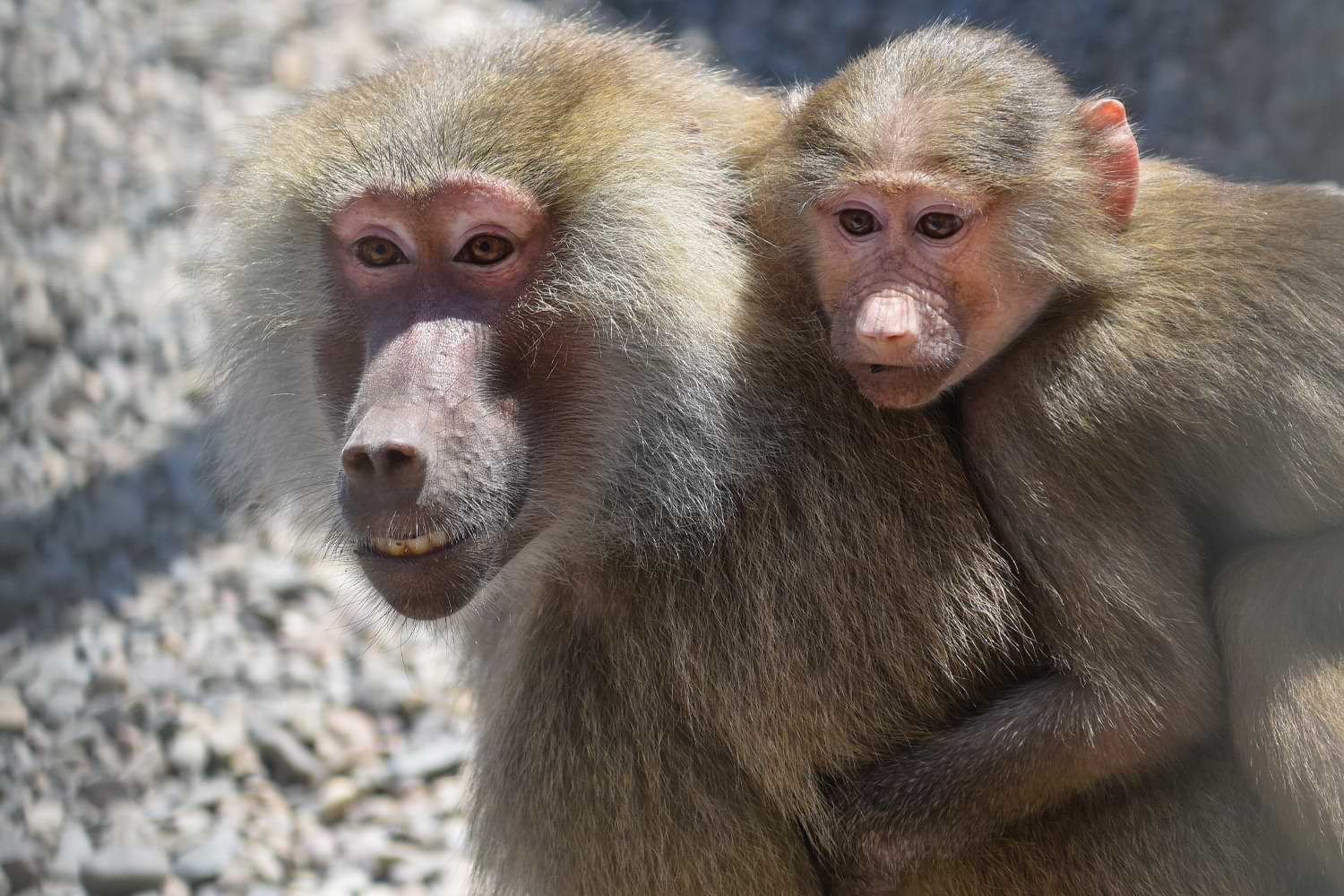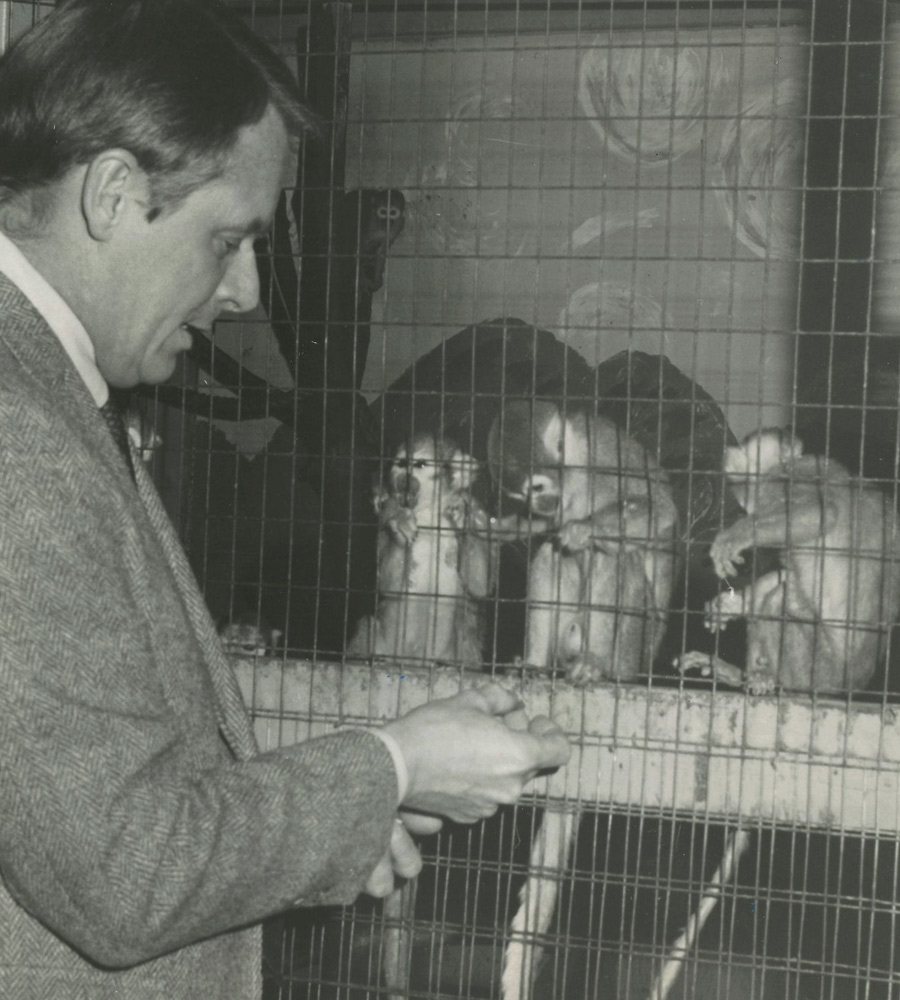

ack in 1968, psychology professor Doug Candland walked into the office of then-University president Charles Watts with an unusual request: to build a 40-by-40-foot cage near the athletic fields to house his troop of baboons. Without a blink, says Candland, Watts replied, “Sure, how much do you need?” Soon after, Candland began working with maintenance staff to convert a prefabricated barn into a primate wonderland of water spouts and trapezes.
Around the same time, Candland received an irresistible offer from another primatologist to house five Japanese snow monkeys, the first ever to enter the U.S. “I went back to the poor president and said, ‘Actually I need two cages,’ ” Candland remembers. “I recall the look on his face, which said, ‘What are you getting me into?’ ”
A half-century later, the answer to that question is clear, as Bucknell celebrates the 50th anniversary of one of the premier animal behavior programs in the country. Only a handful of colleges offer a degree in animal behavior for undergraduates, and none have Bucknell’s variety of primate species. Currently there are four: lion-tailed macaques, hamdryas baboons, brown capuchins and squirrel monkeys. The program also works with other beasties, including rats, salamanders, frogs, bees and chickens.



Often that research leads to publication, as Kristen Palframan ’15 recently discovered when, in 2016, the journal Physiology & Behavior published her thesis on differences in behavior between rats who ate processed versus natural foods. “To get your name as first author on a paper is really exciting,” says Palframan, who is pursuing a graduate degree in public health at the University of Michigan. Volunteering at a cat café enables her to continue working with animals.
From the beginning, the program was envisioned as intensely interdisciplinary, incorporating biology, psychology, chemistry, math, physics and the humanities. “I don’t think you could design a better liberal arts major,” Candland says. Early on, he made two crucial decisions: Researchers would study primates in their natural habitat as much as possible, and “we wouldn’t do anything to them we wouldn’t do to ourselves.” That ethical stance created an atmosphere of extreme care and sensitivity, say graduates, who had to think creatively to design experiments in which the primates would voluntarily participate.
The animal behavior lab became a tight-knit community, with students under Candland’s mentorship conducting research late into the night.
“We spoke more about art and life than we spoke of academic research,” recalls Makoto Fujimura ’83, an artist, author and Bucknell trustee who frequently incorporates natural themes into his work. “The interdisciplinary focus at Bucknell sowed seeds in my life to pursue these somewhat improbable overlaps, between painting and ecology, between contemporary art and sociology, and between life and sciences. My art and writing are full of ideas that germinated then.”
However, an animal behavior degree is not just useful for those who pursue animal-related fields. Glen Tullman ’81 founded Allscripts, which pioneered electronic prescription writing, and is now CEO of Livongo, which equips people with chronic conditions like diabetes with information to help change their behaviors to remain healthy.
“There is a lot you can learn about people from studying animals,” Tullman says. “There’s no question that very basic forms of conditioning come into play, but at a deeper level, the combination of deep science and profound respect for the animals we cared for taught me a lot.”
Candland looks at the accomplishments of alumni in a wide variety of fields as evidence of the success of the program, as well as the key to its continuation in the future. Many of them will be on campus this fall at events and panels celebrating half a century of animal behavior.
“When you are an animal behavior major at Bucknell, you inherit a family of 500 other students who have also been through the program,” Candland says. “Over the next 50 years, I think that will only grow stronger.”